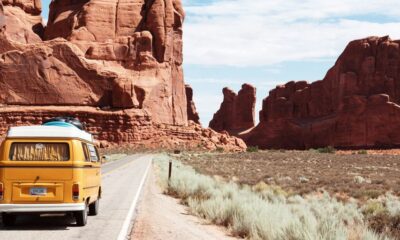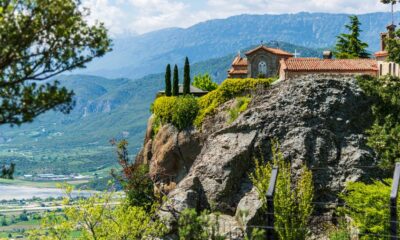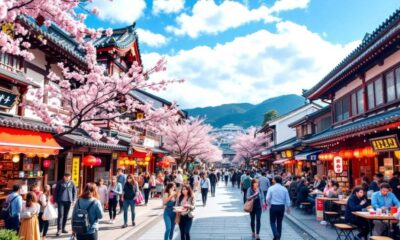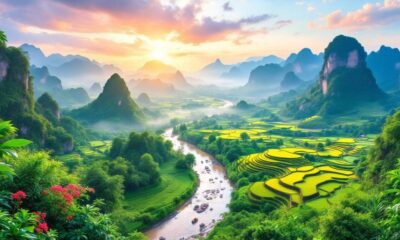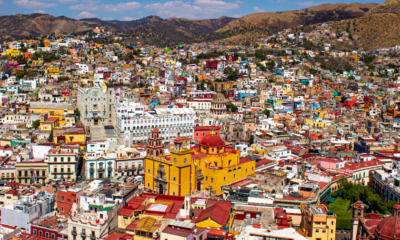Animals
A Photo Safari in Kenya: Lions, Elephants, and the Big Five
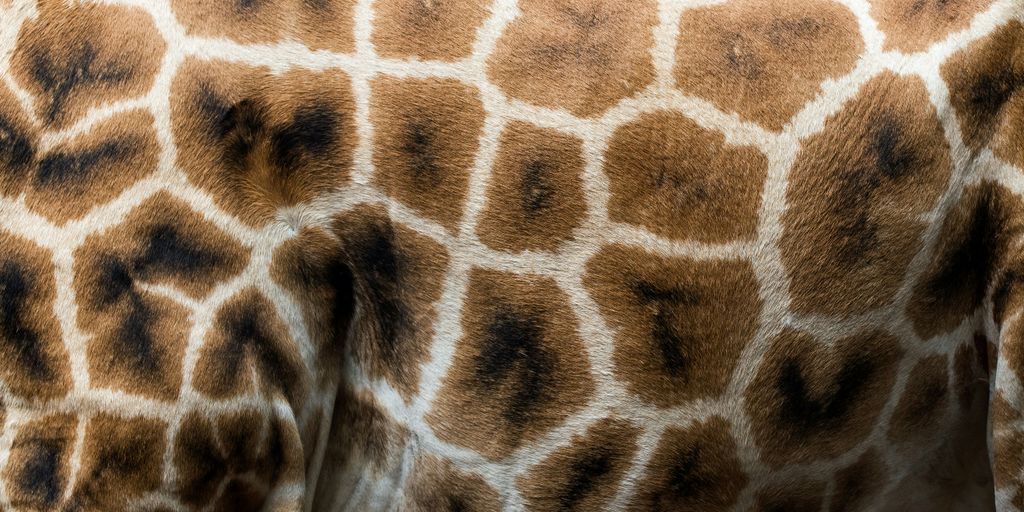
A photo safari in Kenya offers an unforgettable opportunity to capture stunning images of the iconic Big Five – lions, elephants, leopards, rhinos, and buffalo. This adventure not only allows you to witness these magnificent creatures in their natural habitat but also helps raise awareness about wildlife conservation. Whether you’re a seasoned photographer or a beginner, understanding the best practises for photographing these animals will enhance your experience and your photos.
Key Takeaways
- The Big Five includes lions, elephants, leopards, rhinos, and buffalo, and spotting them is a highlight of any safari.
- Timing is crucial; early mornings and late afternoons are the best times to see and photograph wildlife.
- Safety is paramount; always follow your guide’s advice and keep a safe distance from animals.
- Using the right gear, such as telephoto lenses, can greatly improve your wildlife photography.
- Conservation efforts are vital to protect these animals, so supporting eco-friendly tourism is important.
Exploring the Big Five: A Photographer’s Dream
The Big Five are the most sought-after animals for photographers on safari in Kenya. These include the lion, leopard, elephant, rhinoceros, and cape buffalo. Understanding these magnificent creatures is essential for capturing stunning photographs.
Understanding the Big Five
- Lion: Known as the king of the jungle, lions are social animals that live in prides.
- Leopard: Elusive and solitary, leopards are often found resting in trees.
- Elephant: The largest land animals, elephants are known for their intelligence and strong family bonds.
- Rhinoceros: With their thick skin and horns, rhinos are both majestic and endangered.
- Cape Buffalo: These powerful animals are known for their unpredictable nature.
Historical Significance
The term "Big Five" originated in the late 1800s during the colonial era, when these animals were considered the most challenging to hunt. Thankfully, today, they are protected, and tourism has become a vital part of their conservation.
Conservation Efforts
Efforts to protect the Big Five include:
- Anti-poaching initiatives: To safeguard these animals from illegal hunting.
- Habitat preservation: Ensuring their natural environments are protected.
- Community involvement: Engaging local communities in conservation efforts.
The Big Five are not just animals; they represent the beauty and fragility of wildlife in Africa. By photographing them, we contribute to their conservation and awareness.
In conclusion, capturing the Big Five is a dream for many photographers. With the right knowledge and respect for these animals, you can create unforgettable memories and stunning images during your safari adventure.
Capturing the Majestic Lions

Best Time to Photograph Lions
The best times to photograph lions are during the early morning and late afternoon. This is when they are most active, hunting or socialising. Here are some tips for timing your shots:
- Morning light: The soft light enhances the lion’s fur.
- Golden hour: Capture stunning images as the sun sets.
- Post-rain: Look for lions shaking off water after a rainstorm for dramatic shots.
Techniques for Capturing Lion Behaviour
To truly capture the essence of lions, consider these techniques:
- Use a fast shutter speed to freeze action, especially during hunts.
- Focus on interactions within the pride, such as cubs playing or grooming.
- Be patient and wait for the right moment; lions can be unpredictable.
Safety Tips for Photographing Lions
While photographing lions can be thrilling, safety is paramount. Here are some essential tips:
- Stay in the vehicle: Always remain inside your safari vehicle unless instructed otherwise.
- Listen to your guide: They know the best practises for safety.
- Keep a safe distance: Use a zoom lens to capture close-up shots without disturbing the animals.
Photographing lions is not just about the shot; it’s about experiencing their majestic presence in the wild.
In summary, capturing lions in their natural habitat requires careful planning, patience, and respect for their space. With the right approach, you can create stunning images that showcase their beauty and behaviour.
Elephants: Giants of the Savannah
Photographing Elephant Herds
Elephants are truly magnificent creatures, and capturing their beauty can be a rewarding experience. Here are some tips to help you photograph these gentle giants:
- Use different lenses: A wide-angle lens can help you capture the entire herd, while a telephoto lens is great for close-ups of their features.
- Experiment with angles: Try taking photos from various heights and distances to show their size in relation to the landscape.
- Look for interactions: Watch for moments between mothers and their calves, as these can be heartwarming and memorable shots.
Close-Up Shots of Elephants
When photographing elephants up close, focus on their unique features:
- Skin texture: Capture the wrinkles and creases of their skin, which tell a story of their age and experiences.
- Eyes and trunk: Get close to their eyes and trunk to highlight their expressions and the intricate details of their anatomy.
- Playful moments: Baby elephants playing in the mud are particularly adorable and make for fantastic photographs.
Elephant Behaviour to Watch For
Understanding elephant behaviour can enhance your photography:
- Social interactions: Elephants are social animals; observe how they interact within their herd.
- Feeding habits: Watch them as they forage for food, which can lead to interesting action shots.
- Water play: Elephants love to splash around in water, providing great opportunities for dynamic photos.
Elephants are not just the largest land mammals; they play a crucial role in maintaining the ecosystem. Their movements help shape the landscape, creating habitats for other species. This interconnectedness highlights the importance of protecting these incredible animals and their habitats.
The Elusive Leopard: A Rare Sight
Where to Find Leopards
Leopards are known for their stealthy nature and are mostly active at night. To increase your chances of spotting one, consider these locations:
- Maasai Mara: A prime spot for leopard sightings.
- Lake Nakuru: Known for its diverse wildlife, including leopards.
- Samburu National Reserve: Offers a unique chance to see leopards in their natural habitat.
Photographing Leopards in Trees
Leopards often rest in trees during the day. Here are some tips for capturing stunning photos:
- Look for natural framing: Use branches to frame your shot.
- Watch for movement: Be patient and ready for action as they may shift positions.
- Focus on lighting: Early morning or late afternoon light can enhance the leopard’s features.
Tips for Night Photography
Night photography can be challenging but rewarding. Here are some essential tips:
- Use a fast lens: A lens with a wide aperture will help in low light.
- Increase ISO: This allows for better exposure in dark conditions.
- Stabilise your camera: Use a tripod or stabiliser to avoid blurry images.
Spotting a leopard is a rare treat, and capturing its beauty on camera is an unforgettable experience. Stay alert and patient, and you may just be rewarded with a glimpse of this magnificent creature.
Rhinos: Majestic and Endangered
Differences Between Black and White Rhinos
Rhinos are fascinating creatures, and they come in two main types: black and white. Here are some key differences:
- Size: White rhinos are larger than black rhinos.
- Mouth Shape: Black rhinos have a pointed upper lip, while white rhinos have a wide mouth.
- Behaviour: Black rhinos are more solitary, whereas white rhinos often gather in groups.
Best Locations for Rhino Photography
If you want to capture stunning photos of rhinos, consider visiting these locations:
- Lake Nakuru National Park: Known for its black rhinos.
- Solio Game Reserve: A great spot for both black and white rhinos.
- Maasai Mara: Offers chances to see rhinos in their natural habitat.
Conservation Status and Challenges
Rhinos are endangered due to poaching and habitat loss. Here are some challenges they face:
- Poaching: Rhinos are hunted for their horns, which are highly valued.
- Habitat Loss: As human populations grow, rhinos lose their homes.
- Conservation Efforts: Many organisations are working to protect rhinos, but challenges remain.
Protecting rhinos is crucial for maintaining biodiversity in their ecosystems. Every effort counts in ensuring their survival for future generations.
Buffalo: Powerhouses of the Plains
Photographing Buffalo Herds
The African buffalo, often seen in large groups, is a sight to behold. These powerful animals can weigh up to 1,000 kg and are known for their impressive curved horns. When photographing buffalo herds, consider the following tips:
- Capture the herd from a distance to show their size against the landscape.
- Use a telephoto lens to focus on individual buffalo, highlighting their unique features.
- Look for moments of interaction within the herd, such as mothers caring for their young.
Capturing Buffalo Interactions
Buffalo are social creatures, and their interactions can be fascinating to capture. Here are some behaviours to watch for:
- Grooming each other, which shows their social bonds.
- Calves playing, providing adorable photo opportunities.
- Herds forming a protective circle around their young when threatened.
Understanding Buffalo Behaviour
Understanding buffalo behaviour can greatly enhance your photography experience. Here are key points to remember:
- Buffalo are generally calm but can become aggressive if they feel threatened.
- They often graze in the early morning or late afternoon, making these the best times for photography.
- Look for signs of distress in the herd, as this can lead to dramatic moments worth capturing.
Buffalo are not just large animals; they are incredibly strong and can defend themselves against predators. This makes them a thrilling subject for wildlife photography.
Beyond the Big Five: Other Wildlife Highlights

While the Big Five are the stars of any safari, Kenya is home to a rich variety of wildlife that deserves attention. From the breathtaking Great Migration to the fascinating behaviours of lesser-known species, there’s much to capture through your lens.
Photographing the Great Migration
- The Great Migration is one of nature’s most spectacular events, featuring millions of wildebeest and zebras.
- Best viewed between July and October in the Maasai Mara.
- Look for river crossings, where animals face predators and strong currents.
Spotting and Capturing Cheetahs
- Cheetahs are the fastest land animals, making them a thrilling subject.
- They are often found in open grasslands, where they hunt for prey.
- Early morning or late afternoon are the best times for action shots.
The Role of Birds in the Ecosystem
- Birds play a crucial role in the ecosystem, from pollination to pest control.
- Look for vibrant species like the African Fish Eagle and the Lilac-breasted Roller.
- Use a zoom lens to capture their beauty without disturbing them.
Exploring beyond the Big Five can lead to unexpected and rewarding photographic opportunities. Embrace the diversity of wildlife and let your creativity flow!
The Role of a Guide in Your Photo Safari
Choosing the Right Guide
When planning your photo safari, selecting a knowledgeable guide is crucial. A good guide can make a significant difference in your experience. Here are some tips for choosing the right one:
- Look for guides with strong photography backgrounds.
- Check reviews and testimonials from previous clients.
- Ensure they are familiar with the local wildlife and landscapes.
How Guides Enhance Your Photography Experience
Guides play a vital role in helping you capture stunning images. They can:
- Share insights on animal behaviour, helping you anticipate actions.
- Position the vehicle for optimal lighting and angles.
- Provide tips on camera settings for different conditions.
Stories from Experienced Guides
Many guides have fascinating stories that can enrich your safari experience. Here are a few common themes:
- Encounters with rare animals, like leopards or wild dogs.
- Memorable moments with tourists, showcasing the joy of photography.
- Insights into conservation efforts and the importance of protecting wildlife.
A great guide not only helps you find animals but also teaches you about their behaviours and habitats, making your safari unforgettable.
In summary, the right guide can transform your photo safari into a memorable adventure, ensuring you capture the beauty of Kenya’s wildlife while learning about the ecosystem. Their expertise is invaluable in spotting and photographing the Big Five and beyond.
Essential Photography Gear for a Kenyan Safari

When preparing for a photo safari in Kenya, having the right gear is crucial for capturing stunning wildlife images. Investing in quality equipment can make a significant difference in your photography experience. Here’s a breakdown of essential gear you should consider:
Camera and Lens Recommendations
- Camera Body: A DSLR or mirrorless camera with a good sensor is ideal.
- Lenses:
- A telephoto lens (200mm or longer) for distant wildlife shots.
- A wide-angle lens for landscapes and group shots.
Accessories to Bring
- Tripod: For stability, especially in low light.
- Extra Batteries: Wildlife photography can drain batteries quickly.
- Memory Cards: Bring multiple high-capacity cards to store your photos.
Tips for Protecting Your Gear
- Weather Protection: Use rain covers for your camera and lenses.
- Dust Protection: Keep your gear in a dust-proof bag when not in use.
- Insurance: Consider insuring your equipment against loss or damage.
Remember, the right gear not only enhances your photography but also ensures you’re prepared for the unpredictable nature of a safari.
By equipping yourself with the right tools, you can focus on capturing the beauty of Kenya’s wildlife while enjoying the adventure of a lifetime!
Planning Your Photo Safari: Tips and Tricks

Best Times of Year to Visit
When planning your photo safari, consider the following optimal times:
- Dry Season (June to October): Best for wildlife visibility.
- Wet Season (November to May): Great for lush landscapes and baby animals.
- Migration Period (July to September): Witness the Great Migration in the Maasai Mara.
Choosing the Right Safari Package
Selecting the right package can enhance your experience. Here are some options:
- Group Safari: Cost-effective and social.
- Private Safari: Tailored to your interests and pace.
- Luxury Safari: Offers high-end accommodations and exclusive experiences.
Health and Safety Considerations
Ensure a safe and enjoyable trip by keeping these points in mind:
- Vaccinations: Consult your doctor for recommended shots.
- Travel Insurance: Essential for unexpected events.
- Local Guidelines: Follow safety protocols and respect wildlife.
Remember, planning is key to a successful photo safari. The more prepared you are, the more you can focus on capturing stunning images of wildlife.
Summary Table of Key Considerations
| Aspect | Details |
|---|---|
| Best Time to Visit | June to October (Dry Season) |
| Safari Package Types | Group, Private, Luxury |
| Health Precautions | Vaccinations, Insurance, Local Guidelines |
Editing and Sharing Your Safari Photos
Post-Processing Tips
Editing your photos can transform them from good to stunning. Here are some essential tips:
- Adjust exposure to brighten or darken your images.
- Crop to focus on the subject and remove distractions.
- Enhance colours to make your images pop.
Creating a Photo Diary
A photo diary is a great way to document your safari experience. Consider these steps:
- Organise your photos by date or location.
- Write captions to describe each moment.
- Include personal reflections on your experiences.
Sharing Your Work on Social Media
Sharing your photos online can connect you with fellow enthusiasts. Here are some platforms to consider:
- Instagram: Perfect for visual storytelling.
- Facebook: Great for sharing with friends and family.
- Photography forums: Engage with a community of photographers.
Remember, sharing your work not only showcases your talent but also inspires others to explore the beauty of wildlife.
Summary Table of Editing Tools
| Tool Name | Purpose | Cost |
|---|---|---|
| Adobe Lightroom | Photo editing and management | Subscription |
| Photoshop | Advanced editing | Subscription |
| GIMP | Free alternative | Free |
Final Thoughts on Your Kenyan Photo Safari
In conclusion, a photo safari in Kenya offers an unforgettable adventure filled with stunning wildlife and breathtaking landscapes. Encountering the Big Five—lions, elephants, leopards, rhinos, and buffaloes—creates memories that last a lifetime. Each animal has its own unique charm and character, making every sighting special. Remember to be patient and respectful of nature, as these magnificent creatures deserve our admiration. Whether you’re an experienced photographer or just starting out, the beauty of Kenya will inspire you. So pack your bags, grab your camera, and get ready for an incredible journey into the heart of Africa!
Frequently Asked Questions
What are the Big Five animals?
The Big Five refers to five famous animals in Africa: lions, leopards, elephants, rhinos, and buffalo.
When is the best time to go on a photo safari in Kenya?
The best time for a photo safari in Kenya is during the dry season, from June to October.
What camera gear should I bring for my safari?
You should bring a good camera, a zoom lens, spare batteries, and memory cards.
How can I stay safe while photographing wildlife?
Always listen to your guide, keep a safe distance from animals, and never leave the vehicle unless instructed.
Can I see all the Big Five in one day?
It’s rare, but with luck and a good guide, you might see all five in one day.
What should I wear on a photo safari?
Wear neutral-coloured clothing, comfortable shoes, and a hat to protect yourself from the sun.
How do I improve my wildlife photography skills?
Practise taking photos in different lighting, learn about animal behaviour, and experiment with different angles.
Is it necessary to have a guide for a photo safari?
Yes, a guide can help you find animals, ensure your safety, and improve your photography experience.


